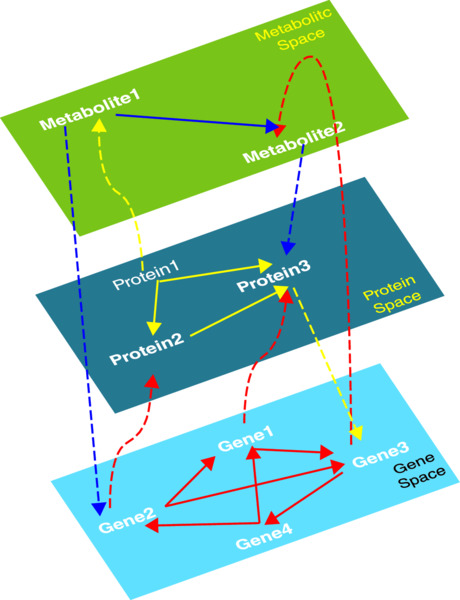CHAPTER 8RECONSTRUCTION OF LARGE-SCALE GENE REGULATORY NETWORK USING S-SYSTEM MODEL
Ahsan Raja Chowdhury
Faculty of Information Technology, Monash University, Australia
Madhu Chetty
Faculty of Science and Technology, Federation University Australia, Australia
8.1 INTRODUCTION
Systems biology is an evolving field that allows holistic analysis by uncovering the system-level principles of a biological system. According to Brazhink et al. [6], a biological system can be visualized as a multi-layered network of different processes. An abstract view of such a system, shown in Figure 8.1, considers the processes as involving variables such as metabolites, proteins, and genes in separate layers. However, in reality, the variables in each layer interact not only with the variables in the same layer but also with the variables in other layers. In most of these underlying interactions, genes play an important role in carrying out the complex biochemical interactions. Thus, a gene regulatory network (GRN) acquires significance as it can reveal the underlying biological processes of living organisms, and provide new insights into the causes of complex diseases or for designing new drugs [16]. As a functional circuitry of a living organism, GRN exhibits the regulatory relationships

Figure 8.1 Different layers of processes in a typical biological system (adapted from Ref. [6]).
among genes ...
Get Evolutionary Computation in Gene Regulatory Network Research now with the O’Reilly learning platform.
O’Reilly members experience books, live events, courses curated by job role, and more from O’Reilly and nearly 200 top publishers.

